Advantages and Disadvantages of Cloud Call Centers

Have you ever wondered why so many businesses are transitioning their operations to cloud-based call centers? Unlike traditional setups that depend on bulky on-premise hardware, cloud-based call centers function entirely online. This allows businesses to access essential services like call routing, customer support tools, and real-time analytics from virtually anywhere.
The shift to cloud solutions is happening for compelling reasons. By 2018, 39% of contact centers in the UK had already adopted cloud-based systems, with another 57% planning to follow within three years. The pandemic further accelerated this trend, with 70% of global contact centers now expecting remote work to remain a permanent fixture. With Sobot’s cutting-edge solutions, including its cloud-based call centers, businesses can benefit from unmatched flexibility, scalability, and advanced features that simplify managing customer interactions like never before.
Advantages of Cloud-Based Call Centers

Cost Savings and Economic Efficiency
Switching to cloud contact centers can save your business a lot of money. Unlike traditional setups, cloud-based call centers don’t require heavy upfront investments in hardware or infrastructure. Instead, you can enjoy a pay-as-you-go pricing model, which means you only pay for the services you actually use. This flexibility ensures cost efficiency, especially for businesses that experience fluctuating call volumes.
Another big advantage is the reduced maintenance costs. With a cloud-based solution, the service provider handles all updates and maintenance, so you don’t have to worry about hiring IT staff or dealing with unexpected repair bills. Plus, intelligent features like call routing and workforce optimization help you get the most out of your team, cutting down on labor costs.
Here’s a quick look at how cloud-based contact centers save money:
| KPI | Description |
|---|---|
| Reduced Infrastructure Costs | No need for expensive on-premises equipment, lowering setup and maintenance costs. |
| Flexible Pricing Models | Pay-as-you-go pricing lets you scale services based on demand, optimizing costs. |
| Improved Agent Productivity | Automation tools enhance efficiency, reducing labor costs and improving service quality. |
| Reduced Maintenance Costs | Providers handle updates and maintenance, saving you time and money. |
| Improved Energy Efficiency | Cloud solutions lower energy bills by eliminating the need for on-site hardware. |
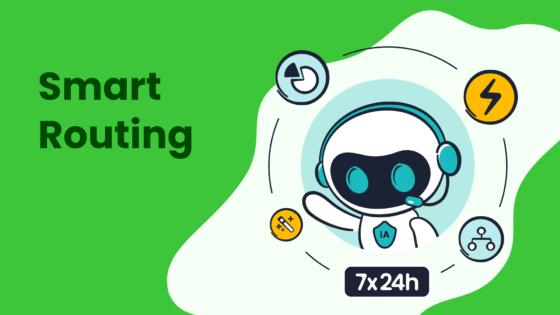
By choosing a virtual contact center like Sobot’s Voice/Call Center, you can enjoy all these benefits while accessing advanced features like AI-powered voicebots and global number availability. It’s a smart way to reduce costs and improve efficiency.
Scalability and Flexibility for Growing Businesses
One of the standout features of cloud-based call centers is their scalability and flexibility. As your business grows, you can easily add new lines or expand your services with just a few clicks. Traditional call centers, on the other hand, require costly and time-consuming hardware installations for every new line.
Here’s a comparison to show how cloud contact centers outshine traditional setups:
| Function | Cloud contact center | On-premises contact center |
|---|---|---|
| Scalability | Near-infinite scalability; add lines easily | Requires additional on-premise setup for each line |
This scalability makes cloud-based contact centers ideal for businesses experiencing rapid growth or seasonal demand spikes. For example, during the holiday season, you can quickly scale up your operations to handle increased call volumes and then scale back down afterward. This level of flexibility ensures you’re always prepared without overspending.
Sobot’s cloud-based call center takes scalability to the next level. With features like bulk outbound tasks and seamless integration with existing systems, it’s designed to grow with your business. Whether you’re a small startup or a large enterprise, Sobot’s solutions adapt to your needs effortlessly.
Remote Work Capabilities and Workforce Adaptability
Cloud-based call centers are a game-changer for remote work. They allow your agents to work from anywhere, ensuring uninterrupted service even during unexpected events like natural disasters or pandemics. This flexibility not only keeps your operations running smoothly but also boosts employee satisfaction.
Studies show that remote workers are often happier and more productive than their in-office counterparts. They experience less stress, enjoy better work-life balance, and save time by avoiding long commutes. For businesses, this translates to higher productivity and lower overhead costs, as you don’t need to maintain large office spaces.
Here are some key benefits of remote work enabled by cloud contact centers:
- Agents can work from any location, ensuring consistent service.
- Strategic resource allocation becomes easier during peak times.
- Employees report higher satisfaction and reduced burnout.
- Virtual meeting tools and intranets enhance collaboration and knowledge sharing.
Sobot’s virtual contact center supports remote work seamlessly. With a unified workspace and real-time monitoring tools, your team can stay connected and productive no matter where they are. Plus, features like time zone support and smart call routing ensure your customers always receive timely assistance.
Faster Deployment and System Updates
Cloud contact centers make deployment and updates a breeze compared to traditional systems. You don’t have to wait weeks or months for hardware installations or software upgrades. Instead, everything happens online, often in real time. This speed is a game-changer for businesses that need to adapt quickly to changing customer demands or market trends.
Here’s why cloud-based systems excel in deployment and updates:
- Continuous updates ensure your system stays ahead of consumer expectations.
- Automation reduces manual errors, speeding up the process.
- Software-based solutions eliminate the need for specialized hardware, saving time.
- Extensive validation testing guarantees reliable, telco-grade deployments.
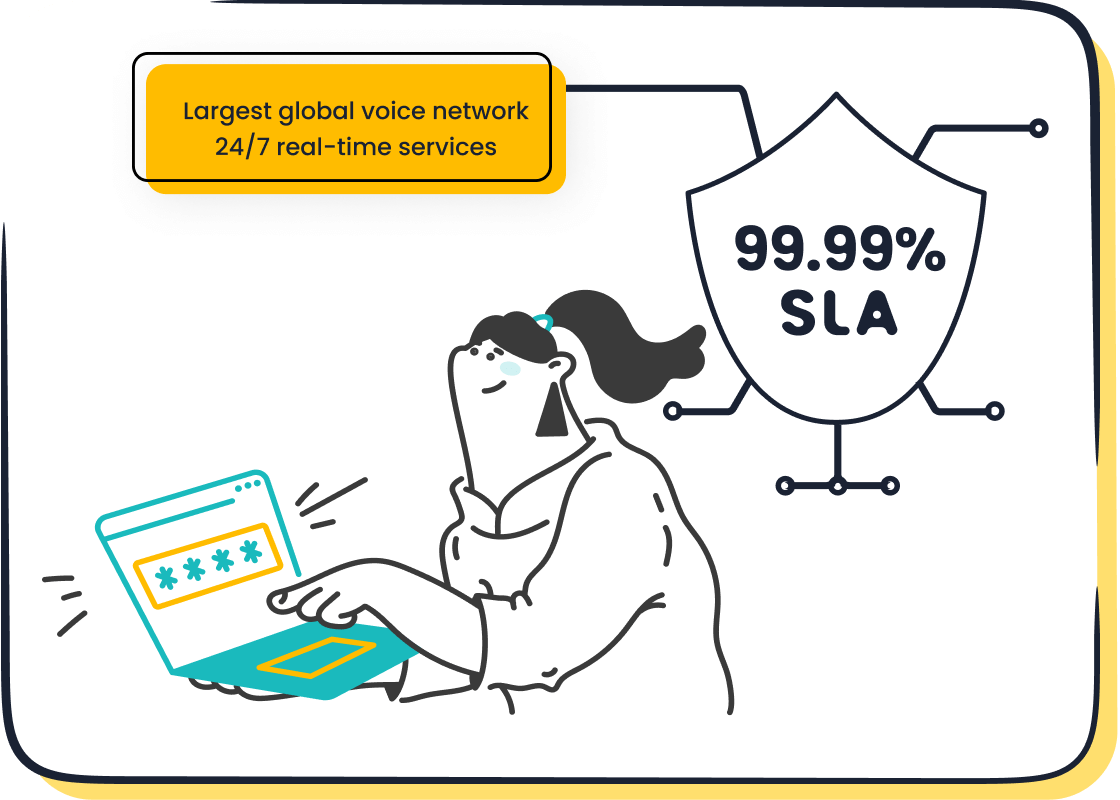
Imagine launching a new feature or scaling your operations in just a few clicks. That’s the kind of agility cloud contact centers offer. With Sobot’s Voice/Call Center, you can deploy intelligent IVR systems, smart call routing, and AI-powered voicebots almost instantly. Plus, its 99.99% uptime ensures your system remains stable during updates, so your customers never experience downtime.
Enhanced Customer Experience with Advanced Features
Advanced features and functionality in cloud contact centers transform how you interact with customers. These tools don’t just improve efficiency—they elevate the entire customer experience.
| Advanced Feature | Impact on Customer Experience |
|---|---|
| Enhanced Data Analytics | Tracks metrics like call volume and satisfaction, identifying trends. |
| Improved Operational Efficiency | Automates routine tasks, freeing agents for strategic activities. |
| Strategic Decision Making | Provides data-driven reports for effective management. |
| Quality Control and Training | Monitors interactions to ensure service standards and targeted training. |
| Integration and Scalability | Seamlessly connects systems for a unified view of customer interactions. |
For example, 86% of businesses now use big data analytics to understand customer preferences better. This insight helps you personalize interactions, resolve issues faster, and build stronger relationships.

Sobot’s Voice/Call Center takes these features to the next level. Its unified workspace consolidates customer data, enabling agents to deliver personalized service. Real-time monitoring tools ensure quality control, while AI-powered voicebots handle repetitive queries, letting your team focus on complex issues. These features don’t just improve functionality—they create memorable experiences for your customers.
How Sobot's Voice/Call Center Enhances Cloud Contact Centers
Sobot’s Voice/Call Center is packed with features designed to enhance cloud contact center capabilities. It’s not just about handling calls—it’s about transforming how your business communicates.
| Performance Metric | Description |
|---|---|
| Call Routing | Smart call routing connects customers to the right agent quickly, reducing frustration. |
| Anywhere, Anytime Operations | Supports remote work, ensuring 24/7 service without high costs. |
| Real-Time Collaboration | Enables agents to share customer information, improving personalized service and efficiency. |
| Powerful Analytics | Tracks call volume and agent performance, helping you make data-driven decisions. |

With Sobot, you get advanced features like global number availability, AI-powered voicebots, and seamless integration with CRM systems. These tools don’t just improve operations—they empower your team to deliver exceptional customer experiences. Whether you’re managing inbound calls or launching bulk outbound campaigns, Sobot’s platform adapts to your needs effortlessly.
Disadvantages of Cloud-Based Call Centers
Cybersecurity and Data Privacy Concerns
When you move your operations to cloud contact centers, you open the door to potential cyberattacks. While cloud-based systems offer flexibility and scalability, they also come with risks tied to data privacy and security. Cybercriminals often target virtual contact centers because they store sensitive customer information, including payment details and personal data.
Here’s a snapshot of common cybersecurity concerns:
| Concern | Percentage of Organizations Affected |
|---|---|
| Data Loss/Leakage | 69% |
| Data Privacy/Confidentiality | 66% |
| Accidental Exposure of Credentials | 44% |
| Incident Response Challenges | 44% |
| Legal and Regulatory Compliance | 42% |
| Insider Threats | 74% (vulnerability acknowledged) |
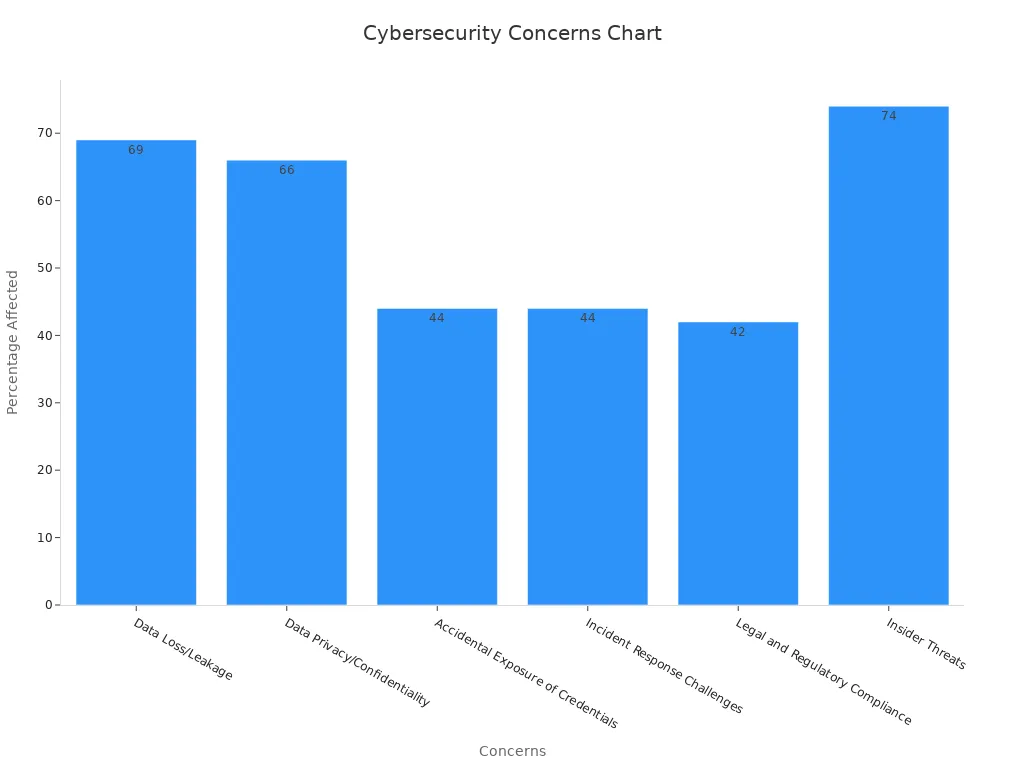
These statistics highlight the importance of robust security measures. For example, insider threats are a major concern, with 74% of organizations acknowledging vulnerabilities. Additionally, legal compliance with regulations like GDPR and HIPAA can be challenging, especially for businesses operating across multiple regions.
Sobot’s cloud-based call centers address these concerns with encrypted data transfer and secure dialing. Features like real-time monitoring and AI-powered voicebots help detect anomalies, ensuring your customer support operations remain safe and compliant.
Dependence on Stable Internet Connectivity
Cloud contact centers rely heavily on stable internet connectivity. If your connection falters, your services can suffer, leading to downtime and frustrated customers. This dependence on connectivity can be a double-edged sword, especially for businesses in areas with unreliable networks.
Here’s what you need to know about connectivity challenges:
- Disruptions in internet service can lead to downtime, affecting customer support operations.
- Poor network performance can result in delays, dropped calls, and reduced customer satisfaction.
- Investing in reliable internet connections and backup systems is essential to prevent service interruptions.
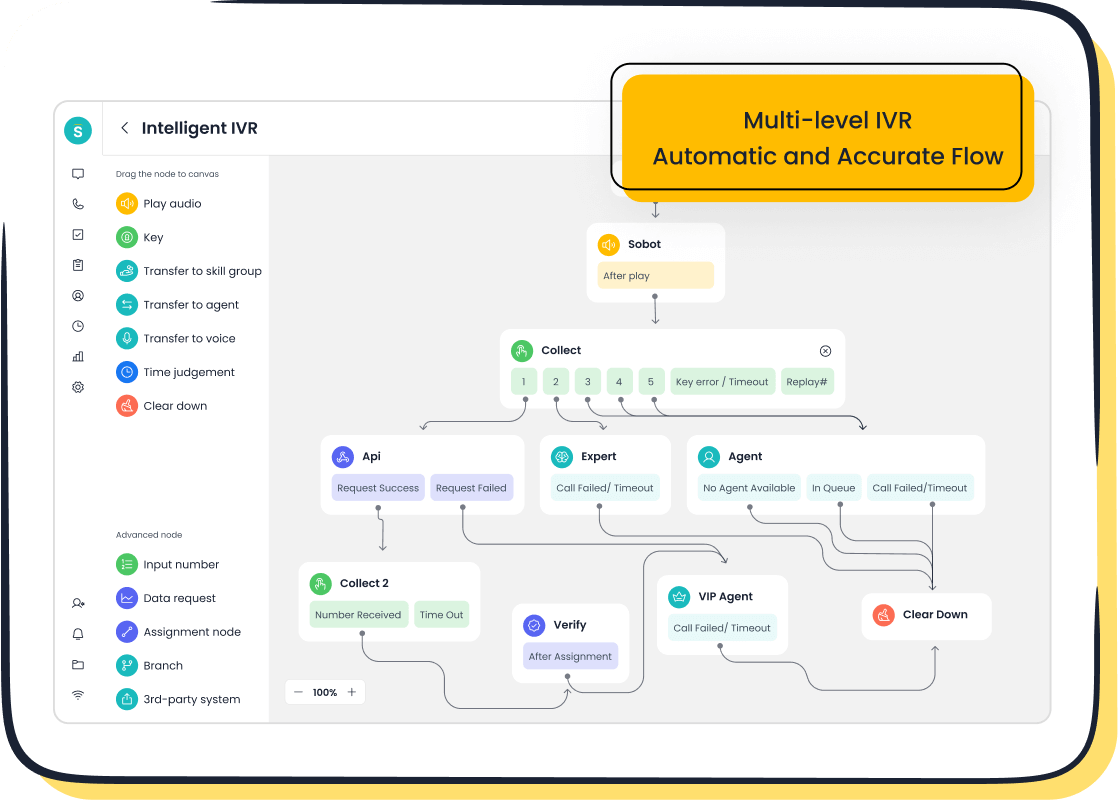
On the bright side, well-optimized cloud phone systems can achieve 99.99% uptime. Built-in failover options ensure continuous communication, even during outages. Sobot’s virtual contact center leverages a global network with 110 points of presence across 93 cities, minimizing connectivity risks and ensuring seamless operations.
Employee Isolation in Remote Work Environments
While remote work offers flexibility, it can also lead to employee isolation. Agents working from home may feel disconnected from their teams, which can impact their mental health and productivity. Over time, this isolation can result in emotional exhaustion, job burnout, and even high turnover rates.
Here’s a closer look at the psychological impacts:
| Psychological Impact | Correlates |
|---|---|
| Emotional exhaustion | Anxiety, depression, feeling less valued, inefficient social support networks |
| Job burnout | Work overload, chronic emotional and workplace stress |
| Increased stress levels | Lack of social support, unclear job instructions, work-life conflict |
| High turnover | Unsatisfactory professional self-esteem, psychological distress |
| Negative employee wellbeing | Challenges and hindrance stressors, high job demands |
| Adjustment issues to remote work | Job-related stressors negatively associated with adjustment |
| Elevated psychological strain | Work-life imbalance intensified remote employees' psychological strain |
To combat these challenges, cloud-based call centers need tools that foster collaboration and engagement. Sobot’s unified workspace allows agents to share information and communicate effectively, reducing feelings of isolation. Virtual meeting tools and real-time monitoring also help managers stay connected with their teams, ensuring everyone feels supported.
Potential Long-Term Costs for Advanced Features
Cloud call centers often seem like a cost-effective solution at first glance. You avoid hefty upfront costs for hardware and infrastructure, and the pay-as-you-go model feels flexible. But as your business grows, you might notice that advanced features come with their own price tags.
For example, AI-powered tools like voicebots or real-time analytics can significantly enhance your operations. However, these features often require additional subscriptions or upgrades. Over time, these recurring costs can add up, especially if your call volumes increase or you expand into new markets.
Let’s break it down:
- Subscription Fees: Many cloud providers charge extra for premium features like intelligent IVR or bulk outbound tasks.
- Scaling Costs: As your team grows, you’ll need more user licenses, which can increase your monthly expenses.
- Integration Costs: Connecting your cloud system with CRM platforms or other tools might involve upfront fees or ongoing charges.

Imagine running a seasonal business that requires scaling up during peak times. While cloud systems make this easy, the costs associated with scaling can quickly eat into your budget.
Sobot’s Voice/Call Center offers a solution that minimizes these concerns. Its economic SaaS rental model ensures you only pay for what you use, keeping your costs predictable. Plus, features like global number availability and encrypted data transfer come included, reducing the need for costly add-ons.
Tip: Always evaluate the long-term costs of advanced features before committing to a cloud call center. Look for providers like Sobot that bundle essential tools into their base packages.
Limited Customization for Niche Business Needs
Cloud call centers are designed to cater to a wide range of industries. But if your business has highly specific requirements, you might find the customization options somewhat limited.
For instance, niche industries like luxury retail or specialized healthcare often need tailored workflows or unique integrations. While cloud systems offer flexibility, they might not provide the deep customization that on-premise solutions can deliver.
Here’s what you might encounter:
- Workflow Restrictions: Predefined workflows may not align with your unique processes.
- Integration Challenges: Some cloud platforms struggle to connect with niche software or legacy systems.
- Feature Limitations: Advanced tools might lack the specific functionalities your business needs.
Take the example of a boutique jewelry retailer that requires personalized customer interactions. A cloud call center might offer basic CRM integration, but it could fall short in handling the intricate details of high-value transactions.
Sobot’s platform addresses these gaps with its drag-and-drop IVR and smart call routing features. These tools allow you to customize workflows and ensure calls reach the right agents. Additionally, Sobot’s seamless integration capabilities make it easier to connect with niche systems, giving you the flexibility you need without compromising efficiency.
Note: If your business operates in a specialized field, prioritize cloud providers that offer robust customization options. Sobot’s solutions are designed to adapt to diverse industries, from gaming to financial services.
Advantages of Traditional Call Centers
Greater Control Over On-Premise Infrastructure
With traditional call centers, you gain complete control over your on-premise infrastructure. This means you can manage every aspect of your system, from hardware to software, tailoring it to meet your specific needs. For businesses in regulated industries like healthcare or finance, this level of control is invaluable. You can implement strict security measures and ensure compliance with industry standards.
On-premise contact centers also allow for seamless integration with your existing systems. Whether you’re using a custom CRM or specialized tools, you can customize your setup to work perfectly with your operations. This flexibility ensures your contact center aligns with your business goals without compromise.
- You can fully manage your infrastructure, ensuring it meets your unique requirements.
- On-premise solutions provide enhanced control over data privacy and security.
- Customization options make it easier to integrate with existing systems.
If your business prioritizes control and customization, a traditional setup might be the perfect fit.
Enhanced Security for Sensitive Customer Data
When it comes to protecting sensitive customer data, on-premise contact centers offer a significant advantage. Since all data is stored and managed in-house, you don’t have to rely on third-party providers. This reduces the risk of data breaches and gives you peace of mind knowing your customer information is secure.
For industries handling confidential information, like financial services, this is a game-changer. You can implement advanced firewalls, encryption protocols, and access controls to safeguard your data. Plus, you have the flexibility to adapt your security measures as threats evolve.
Did you know that on-premise systems are often the go-to choice for businesses that need to comply with strict regulations like GDPR or HIPAA? By keeping everything in-house, you can ensure your operations meet these legal requirements without relying on external providers.
Stronger Team Collaboration in Physical Workspaces
Traditional call centers foster a sense of teamwork that’s hard to replicate in remote setups. When your agents work together in the same physical space, they can share ideas, solve problems, and support each other more effectively. This collaboration boosts morale and creates a positive work environment.
Face-to-face interactions also make it easier for managers to provide real-time feedback and training. If an agent encounters a challenging customer, they can quickly turn to a colleague or supervisor for help. This immediate support improves service quality and helps your team grow stronger together.
For example, imagine a busy retail call center during the holiday season. Agents can collaborate to handle high call volumes, ensuring customers get the help they need without long wait times. This kind of teamwork is a hallmark of on-premise contact centers.
Predictable Costs for Maintenance and Operations
One of the biggest advantages of traditional call centers is the predictability of costs. Unlike cloud-based systems, where expenses can fluctuate based on usage or additional features, traditional setups offer a more stable financial outlook. This consistency makes it easier for businesses to plan their budgets and allocate resources effectively.
Let’s break down the key expense categories in traditional call centers:
| Expense Category | Description |
|---|---|
| Labor Costs | A significant portion of expenses, often optimized through strategic management. |
| Technology Investments | Spending on software and AI tools to boost efficiency and service quality. |
| Compliance Costs | Budget allocated to meet regulations, reducing risks and ensuring smooth operations. |
| Resource Allocation | Regular analysis of call data to improve financial management and customer service. |
| Overall Budget Allocation | Businesses allocating 20-30% of their budget to these areas often achieve better scalability. |
These predictable costs allow you to focus on improving operations without worrying about surprise expenses. For example, labor costs, while substantial, can be managed through efficient scheduling and workforce optimization. Similarly, technology investments in tools like AI-driven analytics or call monitoring systems enhance service quality while staying within budget.
Traditional call centers also simplify maintenance planning. Since you own the infrastructure, you can schedule regular upkeep to avoid unexpected breakdowns. This proactive approach ensures smooth operations and minimizes downtime. Sobot’s solutions, while cloud-based, also emphasize reliability with features like a 99.99% uptime guarantee, ensuring businesses experience minimal disruptions.
If your business values financial stability and long-term planning, traditional call centers provide a dependable framework. By understanding and managing these predictable costs, you can maintain high service standards while staying within budget.
Disadvantages of Traditional Call Centers
High Initial Setup and Maintenance Costs
Setting up on-premise contact centers requires a significant financial commitment. You’ll need to invest in hardware, software, and infrastructure before you can even begin operations. These costs can be overwhelming, especially for small businesses or startups.
Here’s a breakdown of the typical expenses:
| Cost Type | Description |
|---|---|
| Initial Setup Costs | Large investments in hardware and software are necessary to get started. |
| Integration Complexity | Customizing and integrating AI tools with existing systems adds to the expense. |
| Ongoing Maintenance Costs | Regular updates and staff training increase the financial burden over time. |
| Technical Expertise Required | Planning and reconfiguring systems demand skilled professionals, which can be costly. |
Unlike cloud-based solutions, on-premise systems require you to handle all maintenance and upgrades yourself. This means hiring IT staff or outsourcing technical support, which adds to your operational costs. If your business operates in a fast-changing industry, these expenses can pile up quickly as you adapt to new technologies.
Limited Scalability and Flexibility
On-premise contact centers struggle to keep up with growing businesses. Adding new lines or expanding your operations often means purchasing additional hardware and reconfiguring your systems. This process is not only time-consuming but also expensive.
For example, if your business experiences seasonal spikes in customer inquiries, scaling up your on-premise setup to meet demand can be a logistical nightmare. Once the busy season ends, you’re left with unused resources that still require maintenance. This lack of flexibility makes it harder to adapt to changing market conditions.
In contrast, cloud-based solutions like Sobot’s Voice/Call Center allow you to scale up or down effortlessly. With features like bulk outbound tasks and global number availability, you can adjust your operations to match your needs without incurring unnecessary costs.
Challenges in Adapting to Remote Work Trends
Traditional on-premise contact centers face significant hurdles when transitioning to remote work. The lack of physical infrastructure outside the office makes it difficult for agents to access the tools and information they need. This can lead to delays, miscommunication, and a decline in customer satisfaction.
Here are some common challenges:
- Communication barriers make it harder for agents to gauge customer interactions without physical cues.
- Managers struggle to monitor performance and engagement without direct oversight.
- Reliable technology and internet connectivity become critical for smooth operations.
For example, ensuring agents have access to secure systems from home requires additional investments in VPNs and other security measures. On-premise setups also lack the flexibility to integrate remote-friendly tools like virtual meeting platforms or real-time analytics. This makes it harder to maintain team collaboration and productivity in a remote environment.
Sobot’s cloud-based solutions address these issues by offering a unified workspace and seamless integration with remote tools. Features like real-time monitoring and smart call routing ensure your team stays connected and efficient, no matter where they work.
Slower Implementation of New Technologies
When it comes to adopting new technologies, on-premise call centers often lag behind their cloud-based counterparts. This delay can create significant challenges for businesses trying to stay competitive in a fast-paced market. Why does this happen? It’s mainly due to the rigid infrastructure and complex processes tied to on-premise systems.
For starters, upgrading an on-premise system often involves lengthy timelines. You might need to purchase new hardware, install software, and train your team—all of which can take weeks or even months. During this time, your competitors using cloud-based solutions could already be reaping the benefits of the latest tools.
Here’s a quick look at how these delays impact businesses:
| Problem | Business Hit | Money Down the Drain |
|---|---|---|
| Systems That Don't Mesh | 2-3 weeks of sluggish work | 15-20% less cash coming in |
| Training Headaches | 40+ hours per agent | $2,000+ for each employee |
| Data Moving Nightmares | 1-2 months of running two systems | Paying double to keep the lights on |
On-premise setups also struggle with integrating new technologies like AI or omnichannel communication tools. According to the CloudTalk Industry Report (2024), unified communication platforms reduce implementation complexity by 60%. This means cloud-based systems can get you up and running 40% faster, slash training time by 70%, and ensure zero downtime during upgrades.
“Unified communication platforms help integrate omnichannel customer support by providing a centralized console for agents to view complete customer history, reducing implementation complexity by 60% compared to traditional solutions.” – CloudTalk Industry Report, 2024
Sobot’s cloud-based Voice/Call Center eliminates these hurdles. Its drag-and-drop IVR and seamless CRM integration allow you to deploy new features almost instantly. With a 99.99% uptime and global network support, you can stay ahead of the curve without the headaches of on-premise systems. Why wait weeks for an upgrade when you can innovate in real time?
Key Considerations for Choosing Between Cloud and Traditional Call Centers

Business Size and Budget Constraints
Your business size and budget play a huge role in deciding between cloud and traditional call centers. If you're a small or medium-sized business, cloud solutions might be your best bet. They offer a pay-as-you-go model, so you only pay for what you use. This flexibility helps you manage costs, especially if your call volumes fluctuate throughout the year. Plus, you avoid the hefty upfront costs of hardware and infrastructure that come with traditional setups.
For larger enterprises, traditional call centers might seem appealing due to their predictable costs. However, keep in mind that scaling these systems can be expensive and time-consuming. On the other hand, cloud-based systems like Sobot’s Voice/Call Center make scaling effortless. Whether you’re adding new agents or expanding to new markets, you can do it with just a few clicks.
Tip: If your budget is tight or your business is growing quickly, cloud solutions provide the flexibility and cost-efficiency you need.
Customer Service Goals and Expectations
What do you want your customer service to achieve? If your goal is to provide fast, personalized support, cloud call centers are a great choice. They come packed with advanced features like AI-powered voicebots, real-time analytics, and smart call routing. These tools help you deliver exceptional service while keeping response times low.
Traditional call centers, on the other hand, might suit businesses that prioritize control and customization. For example, if you operate in a highly regulated industry, having on-premise systems allows you to implement strict security measures tailored to your needs. However, they may lack the agility to adapt to changing customer expectations.
Sobot’s solutions strike a balance by offering robust security features alongside cutting-edge tools. With a unified workspace and seamless CRM integration, you can meet customer expectations while staying efficient.
IT Infrastructure and Resource Availability
Your existing IT infrastructure is another critical factor. Cloud call centers require a stable internet connection and minimal hardware, making them easier to implement. Traditional systems, however, demand significant IT resources for setup, maintenance, and upgrades.
To evaluate your readiness, consider these steps:
- Conduct technical audits to review your hardware and software.
- Analyze system performance to identify inefficiencies.
- Gather feedback from your team to understand their challenges.
- Ensure compliance with security standards like GDPR or HIPAA.
Cloud solutions like Sobot’s are designed to integrate seamlessly with your existing systems. They also offer features like Infrastructure as Code (IaC) and hybrid cloud capabilities, ensuring smooth operations even in complex IT environments. By optimizing your infrastructure, you can save costs, improve efficiency, and make informed decisions about future investments.
Note: Regular IT assessments help you identify gaps and ensure your systems are ready for the demands of modern customer service.
Long-Term Growth and Scalability Plans
When planning for the future, scalability is one of the most critical factors to consider. As your business grows, your customer service operations need to keep up. This is where cloud contact centers shine. They offer unmatched flexibility, allowing you to scale your operations without the headaches of traditional setups.
The numbers speak for themselves:
- Cloud-based call centers are projected to grow at a compound annual growth rate (CAGR) of 26.8% from 2025 to 2035.
- The global call center industry is expected to grow at a CAGR of 7.4% during the same period.
- Demand for call center solutions is anticipated to reach a market size of around USD 800 billion by 2035, growing at a CAGR of 9-11%.
This rapid growth highlights the increasing reliance on cloud contact centers to meet evolving customer expectations. Whether you're a startup or an established enterprise, these systems adapt to your needs effortlessly. For example, during peak seasons, you can quickly add more agents or lines. Once the demand subsides, scaling back is just as easy.
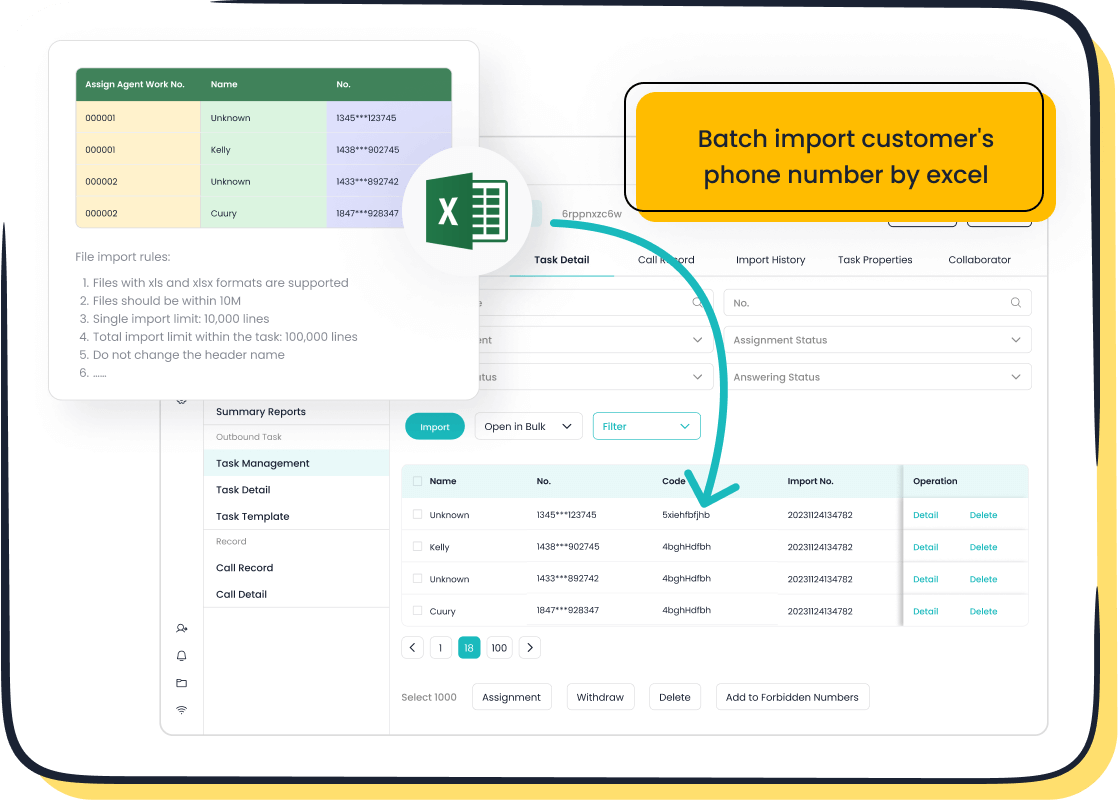
Sobot’s cloud-based solutions take scalability to the next level. With features like global number availability and AI-powered voicebots, you can expand into new markets without breaking a sweat. Plus, its 99.99% uptime ensures your operations remain uninterrupted, even as you grow.
Why Sobot's Cloud-Based Voice/Call Center is a Scalable Solution
Sobot’s Voice/Call Center is designed with scalability in mind. It doesn’t just grow with your business—it empowers you to grow smarter.
| Metric | Value |
|---|---|
| Reduction in inbound volume | 20% |
| Positive feedback rate | 96%+ |
| Correct answers rate | 80%+ |
| Customer satisfaction (CSAT) | 97% |
| Problem resolution rate | 85% |
| Increase in sign-off rate | 35% |
| Increase in COD collection rate | 40% |
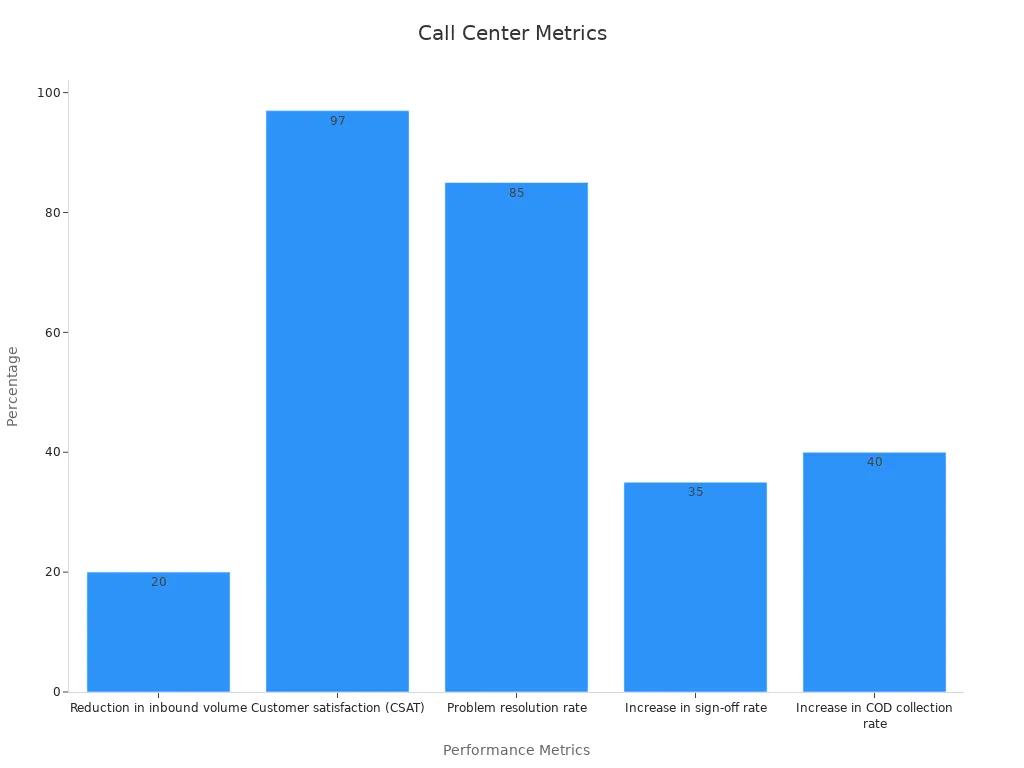
These metrics demonstrate how Sobot’s platform enhances efficiency and customer satisfaction. For instance, its smart call routing ensures customers connect with the right agent quickly, reducing frustration. The AI-powered voicebot handles repetitive queries, freeing your team to focus on complex issues.
Sobot also simplifies global expansion. With access to phone numbers worldwide and seamless CRM integration, you can enter new markets confidently. Its economic SaaS rental model keeps costs predictable, making it an ideal choice for businesses of all sizes.
If you’re looking for a solution that grows with you, Sobot’s Voice/Call Center is the answer. It’s not just scalable—it’s future-proof.
Choosing between cloud based call centers and traditional setups depends on your business needs. Cloud solutions excel in scalability, cost efficiency, and remote work capabilities, while traditional systems offer greater control and security. For example, machine learning and AI methodologies show cloud systems adapt better to changing conditions, but traditional setups thrive in stable environments.
| Methodology | Advantages | Disadvantages |
|---|---|---|
| Time Series Analysis | High accuracy in stable environments, handles multiple seasonal patterns. | Less effective during rapid change, requires significant historical data. |
| Machine Learning & AI | Improved forecasting accuracy, adapts to changing conditions. | Complexity in implementation, requires advanced data processing. |
Aligning your choice with factors like cost, scalability, and security is crucial. Statistics reveal fewer than 10% of companies have a 360-degree view of customer journeys, impacting performance. Predictive analytics can reduce interaction volume and improve wait times, enhancing customer satisfaction.
Sobot’s Voice/Call Center bridges these gaps with advanced features like AI-powered voicebots and global number availability. Its scalable design ensures your operations grow effortlessly while maintaining efficiency. Whether you’re optimizing costs or expanding globally, Sobot’s solutions empower you to meet modern business challenges head-on.
FAQ
What is a cloud call center, and how does it work?
A cloud call center is a virtual platform that manages customer interactions over the internet. It eliminates the need for physical hardware. Instead, you access features like call routing, analytics, and AI tools online. Sobot’s Voice/Call Center offers a seamless experience with 99.99% uptime and global scalability.
How secure are cloud call centers?
Cloud call centers prioritize security with encrypted data transfer and advanced monitoring. For example, Sobot ensures compliance with global standards like GDPR. Its real-time monitoring tools detect anomalies, keeping your customer data safe. This makes cloud solutions a reliable choice for businesses handling sensitive information.
Can cloud call centers handle remote teams effectively?
Yes! Cloud call centers are perfect for remote teams. They allow agents to work from anywhere while staying connected through unified workspaces. Sobot’s Voice/Call Center supports remote work with features like smart call routing and time zone support, ensuring smooth operations across different locations.
Are cloud call centers cost-effective for small businesses?
Absolutely! Cloud call centers operate on a pay-as-you-go model, making them budget-friendly. You avoid upfront hardware costs and only pay for what you use. Sobot’s economic SaaS rental model is ideal for small businesses looking to save money while accessing advanced customer service tools.
How does Sobot’s Voice/Call Center improve customer service?
Sobot’s Voice/Call Center enhances customer service with features like AI-powered voicebots, smart IVR, and real-time analytics. These tools reduce wait times, improve first-contact resolution, and personalize interactions. With a 97% customer satisfaction rate, Sobot helps businesses deliver exceptional experiences effortlessly.
See Also
Advantages and Disadvantages of Working Remotely in Call Centers
Best Reviews of Cloud-Based Contact Center Services for 2024
Key Features to Look for in CRM Call Center Software
Understanding Medical Call Center Services and Their Advantages
Comprehensive Guide to Omnichannel Solutions for Call Centers
